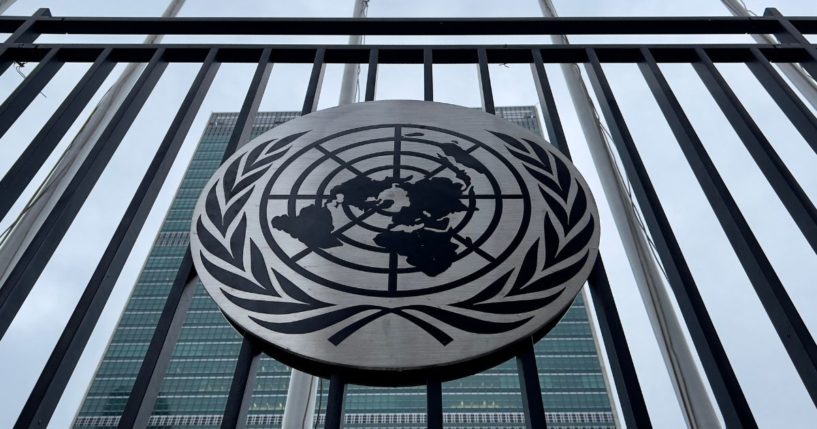
Op-Ed: Want to Understand the Basics of Global Warming? Just Follow Al Gore's Money
“There is a sucker born every minute.” — P.T. Barnum
P.T. Barnum might not have said there is a sucker born every minute. But, if he didn’t, he should have, because it is true.
In the Southwestern U.S. in the late 1800s, snake oil salesmen traveled from town to town in buckboard wagons, peddling snake oil. Now they travel around in private jets to world financial centers, trading carbon.
If one Googles the term “snake oil salesman,” the following appears in the Wikipedia definition: “‘Snake oil salesman’ is a common expression used to describe someone who sells, promotes, or is a general proponent of some valueless or fraudulent cure, remedy, or solution. … In popular culture, a particular kind of confidence trick is associated with the snake-oil salesman – the traveling salesman purports to be a doctor (with false credentials), selling fake medicines with boisterous marketing hype, often supported by pseudo-scientific evidence [emphasis added].”
The Kyoto Protocol was a “climate treaty” ratified by UN climate delegates in December 1997. It became effective in February 2005 for the 36 countries that signed the protocol.
Vice President Albert Gore was a leading proponent of the Kyoto Protocol and signed it on behalf of the U.S. However, President Bill Clinton elected not to submit the climate treaty to the Senate for ratification because the Senate had voted unanimously to oppose the treaty’s ratification. The Senate opposed the treaty because it did not require developing countries to abide by the same standards as developed nations.
The treaty was designed to reduce emissions of seven greenhouse gases; however, the main focus was reducing CO2. The treaty was effective from 2005 to 2012. During that time, worldwide emissions of CO2 increased by 32 percent.
While the Kyoto Protocol did not introduce any new scientific concepts to reduce emissions of CO2, it did introduce a novel economic concept: trading carbon credits and, later, trading carbon offsets.
The idea of trading carbon credits or offsets is based on the fact that living plant matter and the world’s oceans absorb CO2 and are known as “carbon sinks.”
Plant matter absorbs CO2 and emits oxygen in a process called photosynthesis. It is necessary for all human, animal and plant life (including agriculture) on Earth. The world’s oceans absorb and emit CO2 as part of the natural process referred to as the carbon cycle, which includes photosynthesis. Very little is known about the world’s carbon cycle; too many variables are involved, and there is a lack of methodology to measure them.
This is how the “trading scheme” (as the UN calls it) for carbon credits and offsets works.
A UN climate treaty such as the Kyoto Protocol establishes an allocation of carbon credits for a country based on an emission target for a period of time. The carbon emitters in the country are given a target by the government. If the emitters exceed their target, they can buy unused credits from the government, other emitters who don’t use their full allocation or from carbon traders.
There are three main groups of carbon offsets: a removal unit (RMU), an emission reduction unit (ERU) and a certified emission reduction (CER) unit.
An RMU results from land use that primarily affects forestation, such as planting trees or agreeing not to cut down trees, but can also include planting crops or other plant matter. An ERU is acquired by a “joint implementation project” involving two developed countries. If a developed country expects to exceed its emission target, it can invest in a project in another developed nation to reduce carbon emissions. Finally, a CER unit results from an investment by a developed country in a developing country that either reduces or eliminates the emission of CO2.
It should be apparent that the opportunity for fraud in the certification of each of these activities is significant.
So why are trading carbon credits and offsets like selling snake oil?
In my book, I demonstrate that the first principles of science in the relevant fields of thermodynamics, spectroscopy, atmospheric physics and quantum mechanics, as employed in published, peer-reviewed scientific research, prove that CO2 has a de minimis effect on the Earth’s climate.
Further, the world’s temperature databases reveal virtually no warming of the lower troposphere (first 8 km of the atmosphere), the world’s oceans or land mass. Therefore, there is no need to remove CO2 from the atmosphere.
Just like the snake oil salesman of the old West, the new snake oil salesmen use the fraudulent pseudoscience of the global warming hypothesis to sell carbon credits and offsets — in this case, to cure an ailment that does not exist.
Finally, the new snake oil salesmen employ the same sales tactics as their predecessors: Convince people that if they buy their snake oil, they will be doing good — in this case, reducing CO2 concentration in the atmosphere.
In 2004, one year before the Kyoto Protocol took effect, Al Gore and a partner from Goldman Sachs formed the Generational Investment Management Company in London to “engage in sustainable investments.” In 2004, the carbon trading market had a worldwide value of $11 billion; in 2019, $210 billion; and in 2021, $851 billion.
Want to understand the basics of global warming? Follow the money.
The views expressed in this opinion article are those of their author and are not necessarily either shared or endorsed by the owners of this website. If you are interested in contributing an Op-Ed to The Western Journal, you can learn about our submission guidelines and process here.
Truth and Accuracy
We are committed to truth and accuracy in all of our journalism. Read our editorial standards.
Advertise with The Western Journal and reach millions of highly engaged readers, while supporting our work. Advertise Today.












